CHANDRAPUR
Cultural Sites
Last updated on 28 July 2025. Help us improve the information on this page by clicking on suggest edits or writing to us.
Anandwan Warora Library
The library at Anandwan Niketan College, located in Anandwan (Warora Taluka), is one of the oldest in Chandrapur. Established on 20 June 1964, it boasts a collection of 15,000 books, e-books, e-journals, and other learning materials. The library also provides access to 14 daily newspapers.
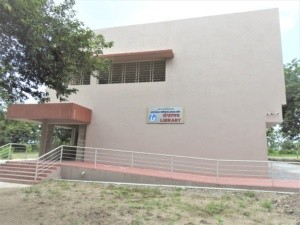
Bhadra Nag Mandir
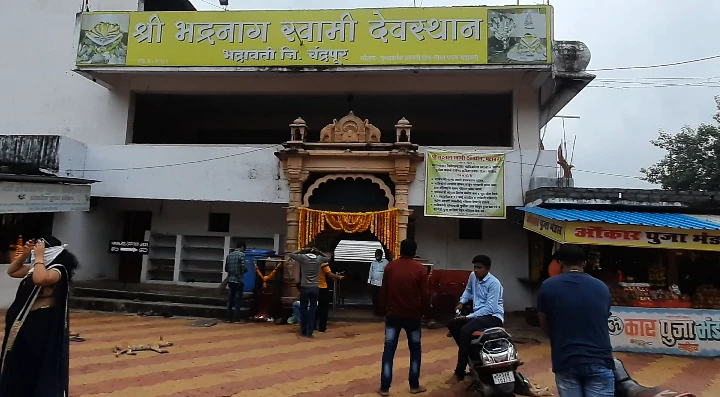
Nag Mandir in the Bhadravati town of the Chandrapur district is a Mandir dedicated to Nag Bhagwan, the serpent devta. Visitors flock to the Mandir during Shivratri. According to local folklore, the Nag Mandir was established to honor Bhagwan Nag, who is considered to be the protector of the region. It is said that this Mandir was built where a huge snake was seen wrapped around a tree, signifying the presence of the divine serpent devta. Many bhakts have reported stories of miraculous healing (usually people bitten by snakes) and fulfillment of wishes. These stories have contributed to the Mandir's reputation as a place of spiritual healing and divine intervention. Locals also believe that worshiping the snake at the Mandir protects them from snake-related dangers.
Bhadravati Fort
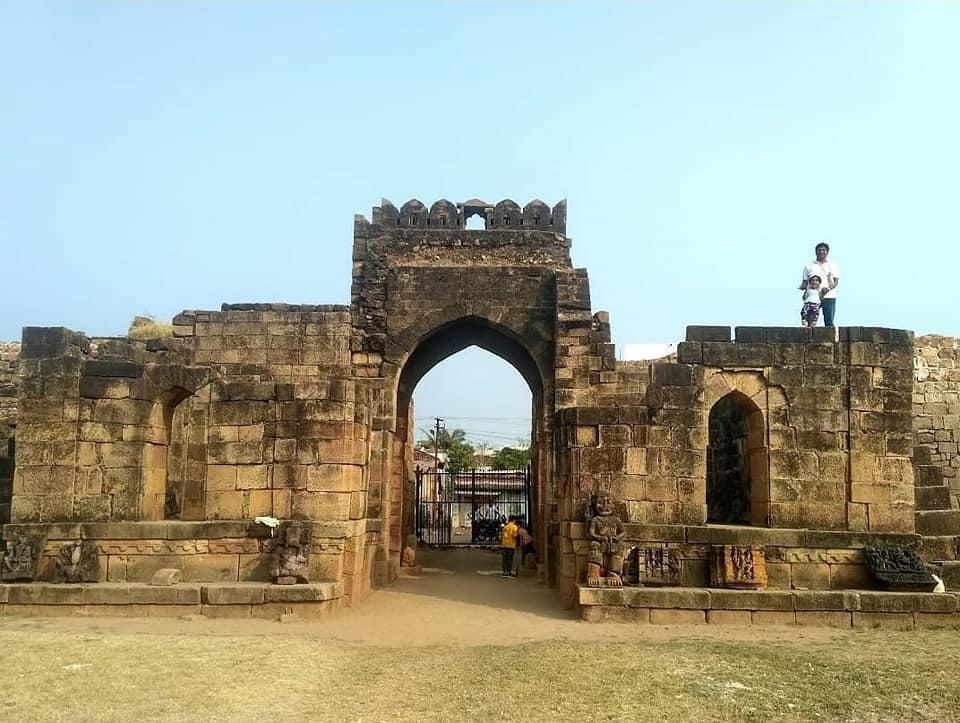
Bhadravati Fort is a historical site located in Bhadravati taluka, approximately 28 kilometers from Chandrapur city. While the fort is commonly associated with the Gond rulers, some evidence suggests that it may have been constructed before their time.
Today, the remains of the fort include sections of walls, bastions, and two main entrances on the northern and southern sides. Several murtis found in the surrounding area have been preserved by the Archaeological Survey of India (ASI) and placed within the fort premises.
Two lion murtis, symbolizing the Gond dynasty, are positioned on either side of the northern gate. Additional sculptures and carvings are visible on the gates and within the fort area. Inside the fort, the foundations of seven buildings, possibly once used to house soldiers and officials, can still be seen, along with a traditional stepwell.
Chandika Devi Mandir

Located in the town of Bhadravati, the Chandika Devi Mandir is believed to be Hemadpanthi architecture. Before entering the Mandir, on an elevated platform in front of the main mandir, one can see a Shivling. The Mandir has a 4-pillar Sabhamandap and a small antral that leads you to a small garbagriha, which houses Chandika devi, Mahalaxmi Mata, and Bhavani Mata. The Navratris are celebrated with great pomp by the Devi's believers.
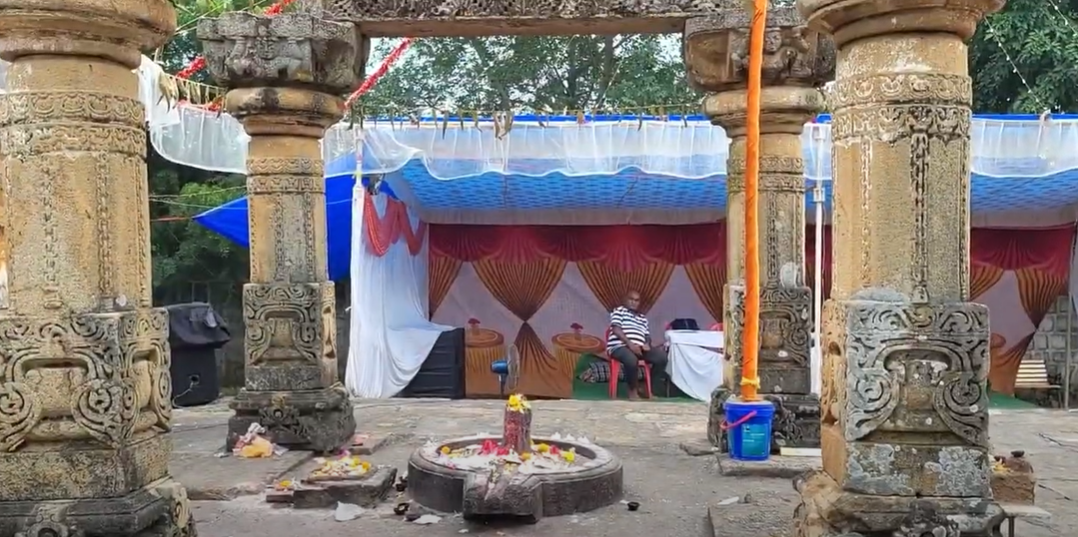
Deekshabhumi
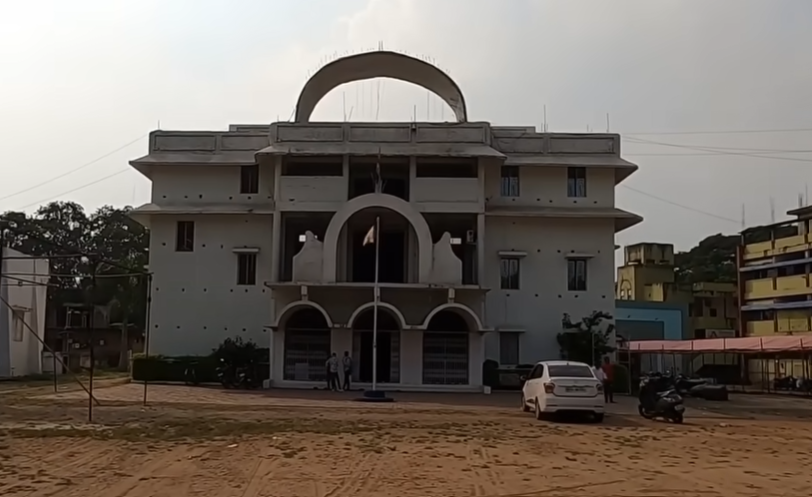
On Ashoka Vijaya Dashami (October 14, 1956), Dr. B. R. Ambedkar, with approximately 400,000 of his followers, mainly Dalits, embraced Buddhism in Nagpur. On October 16 and 17, 1956, B.R. Ambedkar visited Chandrapur and gave deeksha (converted them to Buddhism) to 300,000 of his followers. Located in the main Chandrapur city inside the premises of the Dr. Ambedkar College of Arts, Commerce and Science (est. 1970), the Deekshabhumi is significant to followers of Dr. Ambedkar and Navayana Buddhism in the region.
Nagbhid’s Megalithic Era Menhirs
In the Nagbhid region of a district, many megalithic-era Menhirs (large upright stones erected by humans in prehistoric times) have been discovered. According to a Times of India article (2018) and Amit Bhagat (2019), many of these are believed to be burial sites. These discoveries shed light on the ancient history and settlement patterns of this part of Maharashtra. Archaeologists and experts have emphasized the need for further exploration and detailed documentation to understand the full scope and significance of these findings. The discoveries made by researchers like Bhagat, with the support of organizations like Zep Nisargamitr, are a valuable contribution to the study of ancient civilizations in the region.
Parshwanath Mandir
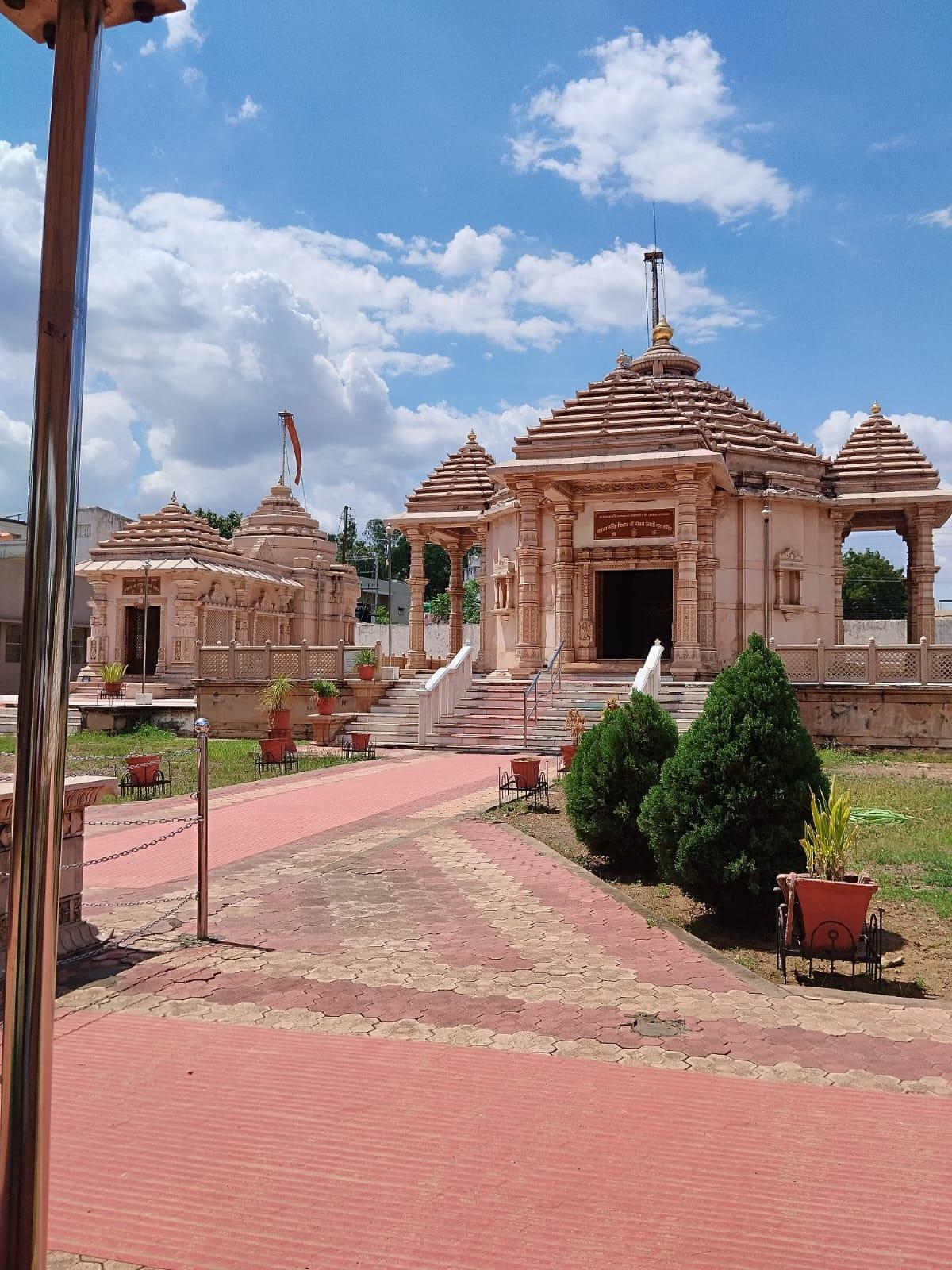
Parshwanath Mandir is an important Jain Mandir and pilgrimage site located in the town of Bhadravati. The Mandir is dedicated to Parshvanatha, the 23rd Tirthankara of Jainism. The Mandir is said to have been established by an individual called Sri Chaturbhuj Bhai in 1910-12 CE.
The story behind the Mandir’s construction is quite interesting, it is said that on a chilly night in January 1910, Sri Chaturbhuj Bhai, who at that time was the administrator of the Antriksha Parswanath Mandir of Shirpur in Akola. Got a vision of a 10-foot-long Nag (Cobra). This Nag told Chaturbhuj Bhai to go to Bhadravati and uplift the ‘already existing but forgotten Mandir’ of Parshvanatha, which he then rightfully did.
Shree Bhavani and Mahishasurmardini Mandir
Situated on Vijjasan Hill, just 3 km from the town of Bhadravati, this Mandir is thought to have been constructed in the 11th century. It showcases the Hemadpanthi style of architecture. The entire structure is crafted from black stone. At the entrance of the Garbagriha, a Ganesh murti carved from black rock is kept. The Mandir is dedicated to Ma Bhavani and Mahishasurmardini (Durga), and there is also a smaller, newly built Mandir dedicated to a recently found murti of Gajalakshmi located just outside the main Mandir. Locals have also found a cave and other shilas (carved stones) in the vicinity of the main Mandir.

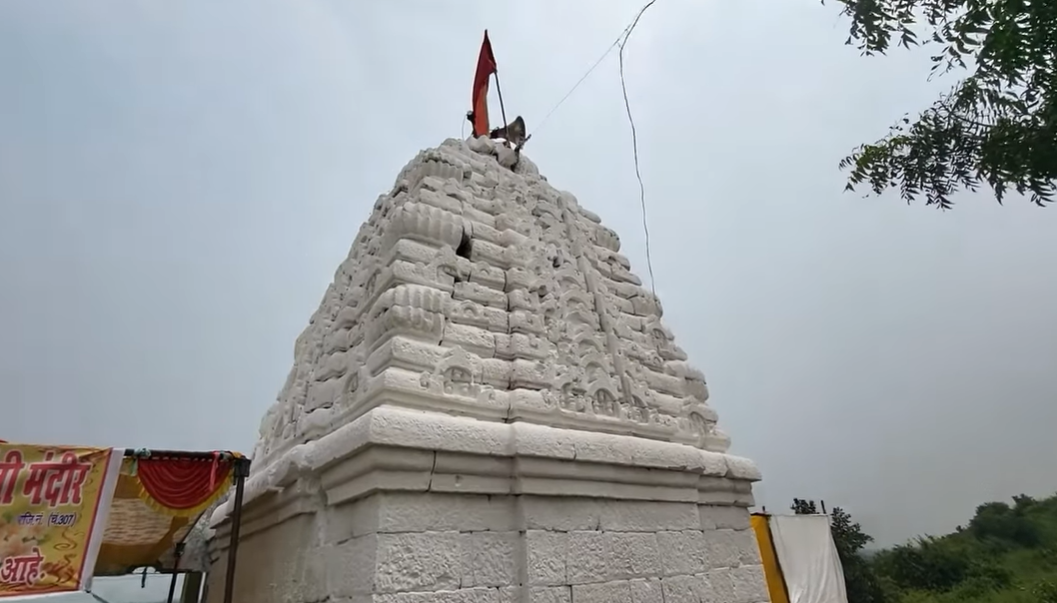
Shree Varad Vinayak Mandir

In the town of Bhadravati, about 30 km from Chandrapur city, is the Mandir of Shree Varad-Vinayak. The murti of Varad Vinayak (a form of Bhagwan Ganesh) is believed to be about 150 to 200 years old. The Mandir was renovated about 30-40 years ago. It is believed to have been built by a sage named Grisamanta (who had received a boon from Bhagwan Ganesh). Ganesh Jayanti is celebrated with great enthusiasm in the month of Paush (December-January). Ganesh Chaturthi is also celebrated with pomp with Kirtans, bhajans and bhandara (community lunch/dinner).

Vijjasan Buddhist Caves
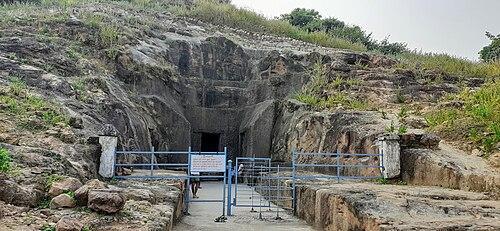
Located about 2 km from the town of Bhadravati are the Vijjasan Buddhist caves. Interestingly, the word ‘Vijja’ means knowledge in the Pali language; thus, the word Vijjasan means ‘The seat of knowledge’. The Vijjasan Buddhist caves are one of the many historical sites located in the vicinity of the town of Bhadravati.
The oldest sites around Vijjasan date to the 1st century CE, during the reign of Yajna Sri Satakarni of the Satavahana dynasty. According to G.K. Mane, like other similar megalithic caves, the caves at Vijjasan were cut into stone foothills with intentionally narrow tunnels to prevent collapse. The main cave at Vijjasan extends 71 ft. (22 m) into the rock in a straight line, ending in a chamber with a carved Buddha sculpture. The tunnel also contains galleries furnished with wall carvings of religious scenes, though some of these have been damaged. Smaller caves and archaeological sites are also present in the area around Vijjasan.
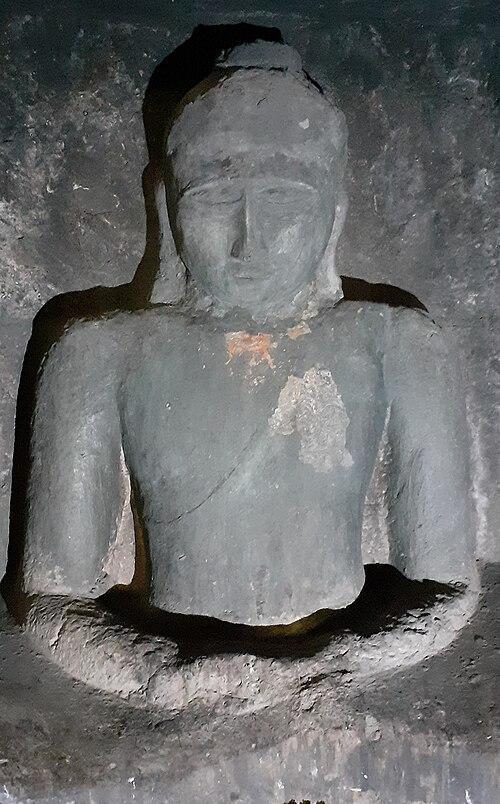
By the 19th century, the caves were being used to shelter the village's cattle. The caves were visited by British general Alexander Cunningham, who mentioned them in one of his books. The largest cave has been designated a Monument of National Importance by the Archaeological Survey of India.
Mahakali Mandir
The Mahakali Mandir holds significant cultural and historical importance. It has a direct connection to the ruling Gond dynasty, which could be a fascinating detail to include. The temple's unique underground architecture makes it a notable landmark. It is also a major religious center, attracting devotees from all over Maharashtra (including places like Latur and Satara), especially during the annual Chaitra fair, which is one of the biggest in the region.
Bengali Camp
The Bengali Camp is the heart of the Bengali community in Chandrapur, hosting some of the most celebrated and largest Durga Puja pandals in the region. This cultural aspect is very popular among residents.
Sources
Anand Niketan College Library.https://ancalib.in/
Bhagat, Amit S. 2019. Recent Discovery of Megalithic Sites in Chandrapur District of Maharashtra. Vol. 7 no. Heritage: Journal of Multidisciplinary Studies in Archaeology. University of Kerala.
Dr. Pallavi Tajane. 2021. Varasa’ |E-06| Madhav Rao Mandir, Chandankheda. YouTube.https://www.youtube.com/watch?reload=9&app=d…
Durgbharari.com. Bhadravati.https://durgbharari.in/bhadravati/
G.K Mane, G.M ManerMane. 2012. MEGALITIC MOMUMENTS & EARLY ROCK CUT ARCHITECTURE OF VIDARBHA (M.S.) - A CRITICAL STUDY. Vol. 73. Proceedings of the Indian History Congress..https://www.jstor.org/stable/44156318
Maharashtra Tourism and Vidharbha Darshan @/vidarbha_darshan1. Instagram.com.https://www.instagram.com/vidarbha_darshan1/…
RJ Dipak Wankhade. 2024. श्री भवानी महिषासुर मर्दिनी मंदिर. YouTube.https://www.youtube.com/watch?v=9a7ZF_R0t-U
Snehlata Shrivastava. 2018. Researcher finds the remains of a 3000-year-old megalithic culture in Chandrapur. Times of India.https://timesofindia.indiatimes.com/city/nag…
Last updated on 28 July 2025. Help us improve the information on this page by clicking on suggest edits or writing to us.